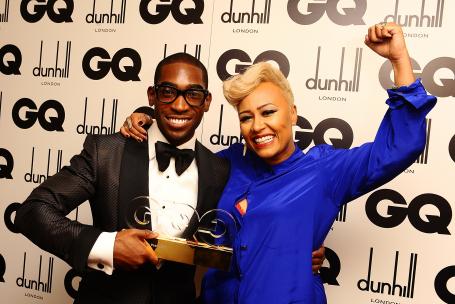Written by Elizabeth Pears
(first published 12/12/2012)
The British African population is nearly double that of Black Caribbeans, report shows after analysis of the last UK Census in 2011.
Representative of this new dominant group is Pop star Tinie Tempah – real name Patrick Chukwue Okogwu – is of Nigerian heritage, and mixed race singer Emeli Sande’s father is from Zambia.
Statistics published in the 2011 Census has revealed the changing face of Britain’s black communities. People who identify as Black African are now the majority group in Britain’s black community as opposed to those who identify as Black Caribbean.
Statistics
In 2001, the Caribbean population outnumbered the African population but there has been a significant reversal.
Between 2001 and 2011, those who identified as Black Caribbean has stabilised at 1.1 percent, increasing nominally by only 29,204.
The Black African population has doubled from 0.8 percent to 1.7 percent, or from 484,783 to 989,628 nominally.
And those who identify as Black Other increased from 0.2 percent to 0.5 percent, with a total population of 28,437.
In terms of British residents born outside of the country, Jamaica – at three percent – represented the sixth biggest group born outside the UK in 2001.
Ten years later, while numbers have increased in real terms from 146,000 to 160,000, the overall percentage has dropped to two percent.
The African Population
In comparison, Nigerian-born British residents feature for the first time in a list of those born outside the UK with a population of 191,000.
Professor Ludi Simpson, of University of Manchester, co-author of Sleepwalking to Segregation?: Challenging myths about race and migration, said: “It might be too soon to start saying that Caribbean presence in Britain is in decline; the population has increased just not as much as others.
“It is clear the African population has doubled. This is because of refugees and new migration patterns, but it could also be those who have settled over the past ten years and have now had children.”
He added: “What is interesting is that some categories like Black Other have increased almost three-fold. It shows that the questions are becoming increasingly difficult to answer.
“People are choosing not to identify as either Caribbean or Africa. Perhaps they’re saying I am black in some way, but it doesn’t matter where I’m from. Identity is more nuanced, but people might see it as less relevant as Britain becomes more diverse and people become more relaxed about multiculturalism.”
Black Communities
Black communities were found in all regions, but the most significant populations were in London and the West Midlands – the two most ethnically diverse regions in England and Wales.
In London, seven per cent of the population is Black African, and 4.2 percent is Caribbean. The largest ethnic group in London is white British, but at 44.9 per cent is the lowest percentage anywhere in Britain.
The Polish community who fall into the White Other category, one of the fastest growing ethnic groups in Britain, was far more spread out.
Simpson said: “This is not necessarily a reflection of how people think, but simply a matter of economics. Migrants traditionally go where the jobs are. When Caribbean migrants arrived in the Fifties and Sixties, jobs were mainly in the service industries found in the bigger cities.
“That has changed now with jobs in agriculture, for example, which is not concentrated in cities. Once you settle somewhere and have a family, you tend to stay.”
Overall, black communities (including Black African, Black Caribbean, Black American or Black European) make up 3.4 percent of Britain’s overall population which now stands at 56.1 million – an increase of seven percent since 2001.
As an ethnic minority, Black Britain is the third largest at 3.3 percent behind White Other (86 percent) and Asian/Asian British who represent 7.5 percent.
Professor Paul Gilroy, author of seminal text There Ain’t No Black in the Union Jack, said: “The black community is relatively small, but its cultural influence is significant. We saw that with the Olympics and the image Britain presented of itself to the world.
“So statistics do tell an important story, but they don’t tell all of our story.”
The Mixed Race Group
One of the biggest trends to emerge from the 2011 Census findings was the growth of Britain’s mixed race population.
Out of the 1.2 million mixed race Britons, a third identify specifically as Black Caribbean and White British.
There is also two million households in England and Wales where partners or household members were of different ethnic groups, a 47 percent increase since 2001.
Professor Simpson said he believed the mixed ethnicity population was probably much larger than the census indicated.
He added: “There are people who do not choose to identify in this way, who may choose one or the other.”
Dr Omar Khan, head of policy at race equality thinktank, the Runnymede Trust, said: The ‘mixed’ population indicates two further important aspects of the census – its role in outlining how people identify, but also – and perhaps more significantly – their social experiences and outcomes.
Referencing trends like unemployment – a rate of 55 percent for black men – he added: “Black Caribbean-White and Black African-White people more likely to have outcomes similar to black people generally.
“Rather than viewing the ‘mixed’ population as a single group with shared social experiences, we should rather focus on the continued salience of race, and how the racial background of parents affects the social outcomes of children.”
Source: Voice-online.co.uk










